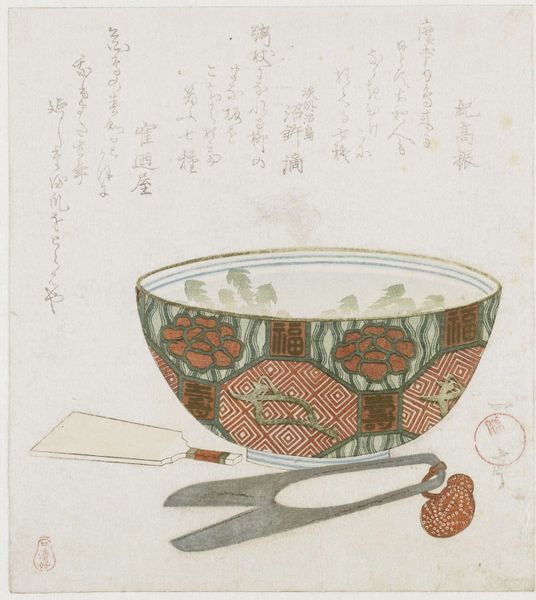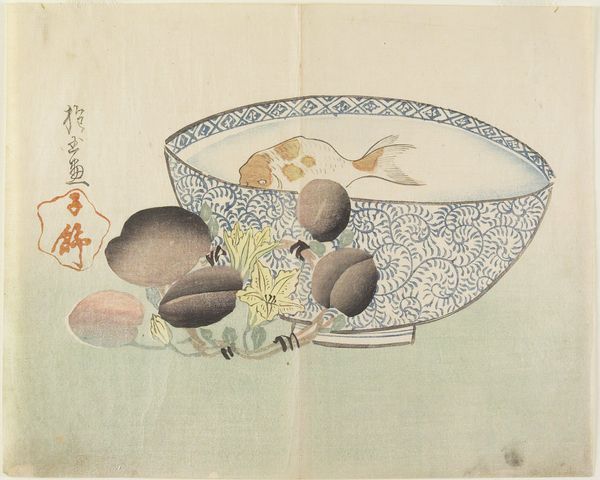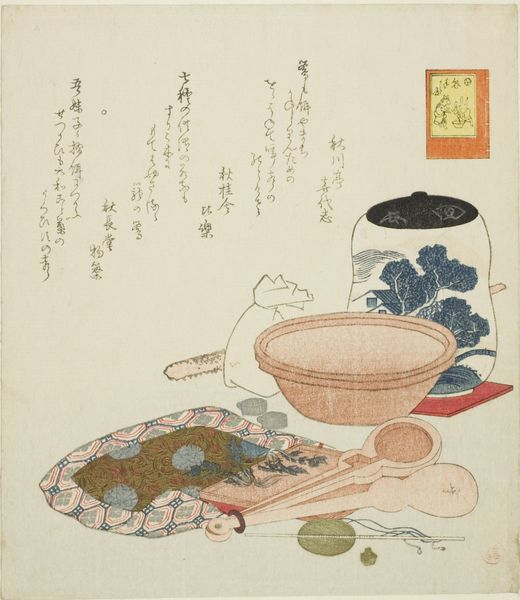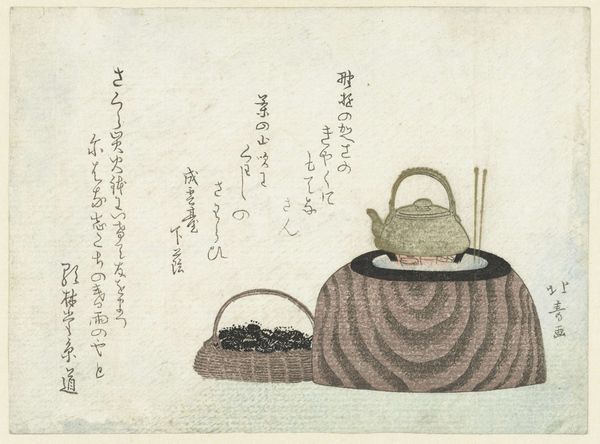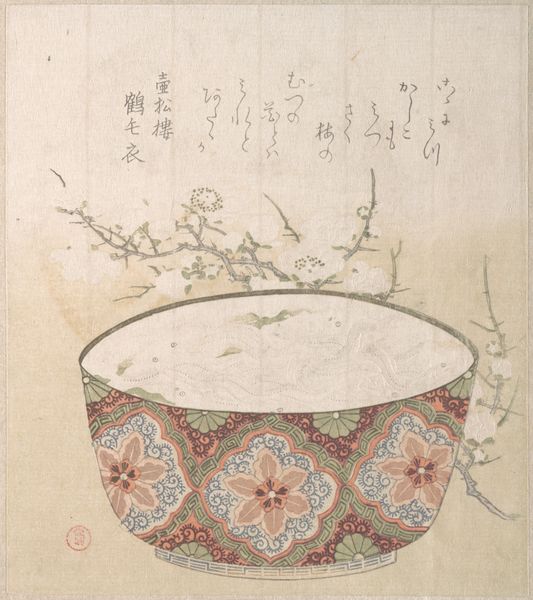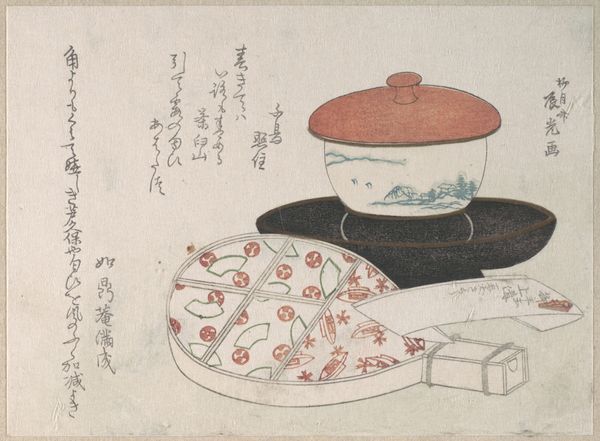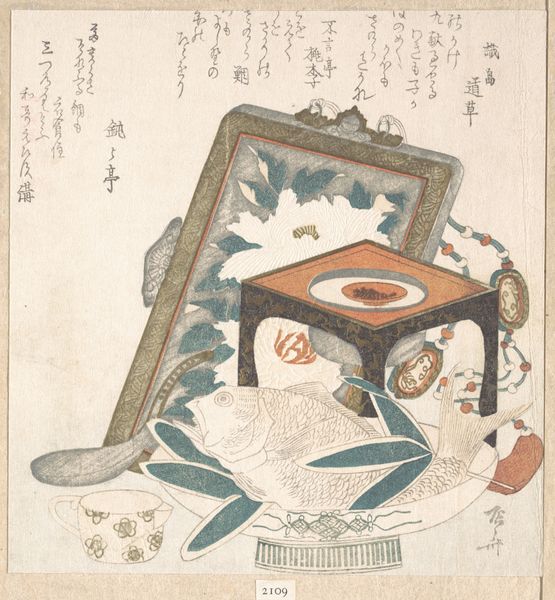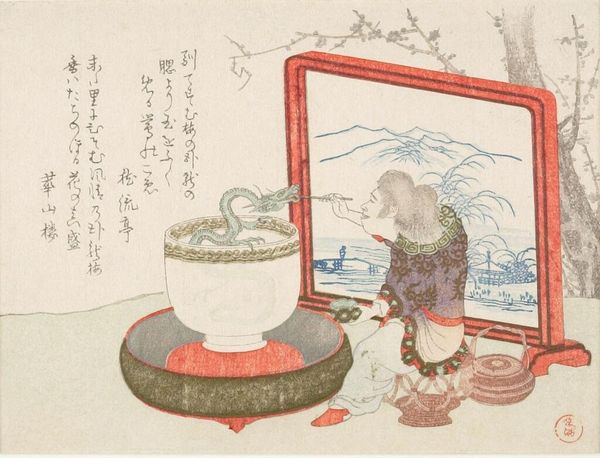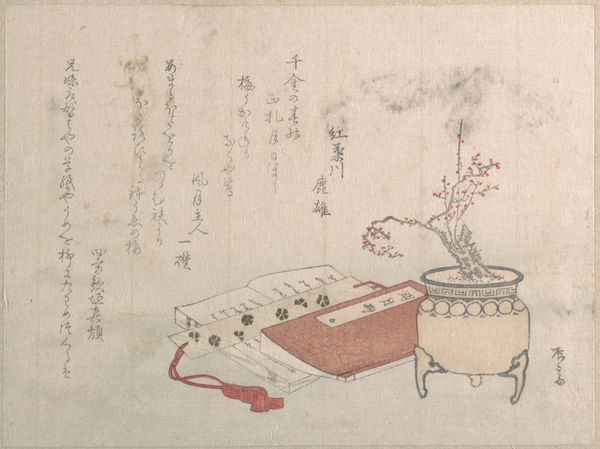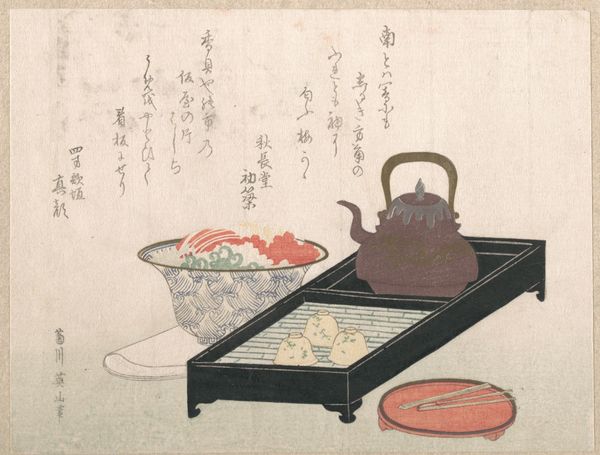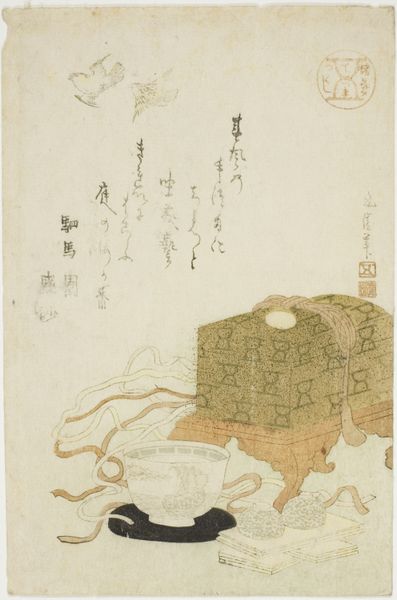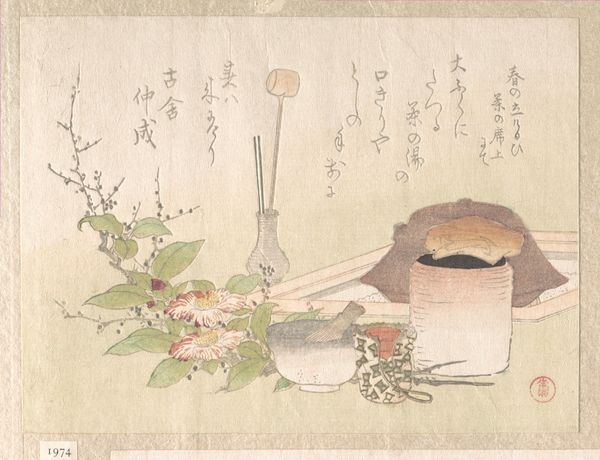
drawing, print, watercolor, ink
#
drawing
# print
#
asian-art
#
ukiyo-e
#
japan
#
personal sketchbook
#
watercolor
#
ink
Dimensions: 9 1/8 × 11 7/16 in. (23.2 × 29.1 cm) (image, sheet, uchiwa-e)
Copyright: Public Domain
Curator: Good morning, everyone. I'm excited to discuss this artwork with you today. What strikes me is how, through precise arrangements, we see the symbolic importance that everyday objects carried in Japanese culture of this period. The work we’re looking at, dating back to the 1830s, is called "Bowl of Water with Tiny Boatman Floating," attributed to Yamada Hōgyoku. It's held here at the Minneapolis Institute of Art. Editor: My first thought? Whimsy. It feels light, delicate, and humorous, almost like a scene from a fable or children's tale. The composition centers around a large bowl—larger than life, really—rendered in watercolor and ink with incredible detail. Curator: Exactly. Note the intricate patterns adorning the bowl—a repeating motif that creates visual texture and rhythm, contrasting nicely with the smooth surface of the water. It is formally interesting as we see foreground/background, still-life/landscape dichotomies unfolding before our eyes. Editor: And the boatman! Perched atop a floating structure, the figure seems utterly self-contained in their miniature world. It speaks to human insignificance in the face of nature, or even societal structures, I feel. We see many similar tropes in the works of Japanese woodblock artists who chose to create images commenting on this perceived tension. Curator: I find your analysis to be spot-on. The lone iris flower provides a subtle yet important counterbalance to the composition, offering visual weight. Color saturation guides the eye towards different elements of this otherwise austere and minimalist scene, bringing our focus on the subject and his vessel, drawing focus toward notions of contemplation and solitude. Editor: Absolutely. Considering ukiyo-e's exploration of ephemeral beauty and pleasure, one might see this as a quiet commentary on fleeting moments. Is our boatman in search of transient happiness, simply drifting with the tides? The socio-economic constraints would certainly give his journey meaning in this sense. Curator: Perhaps. Looking at the lines and color selection more, there’s a remarkable balance between detailed precision and fluid spontaneity, which points to the artistic skill that Yamada employed here, creating a micro-narrative which exists outside any larger framework. Editor: To me, the artwork serves as a reminder of our interconnectedness. A simple scene—bowl, water, person—magnified into something profound. This drawing can challenge preconceived notions of identity, cultural relevance, and place within greater socio-historical settings. Curator: It is precisely how such careful organization generates powerful visual statements—this blend of artistic prowess is a crucial aspect of Japanese art during this period. Editor: The narrative pulls back to wider political commentaries too—art and objecthood were both essential elements of colonial and trade histories in this period. Thanks to this piece I feel able to recognize how artists in both Japan and elsewhere would push against existing societal hierarchies through symbolic artwork.
Comments
No comments
Be the first to comment and join the conversation on the ultimate creative platform.
